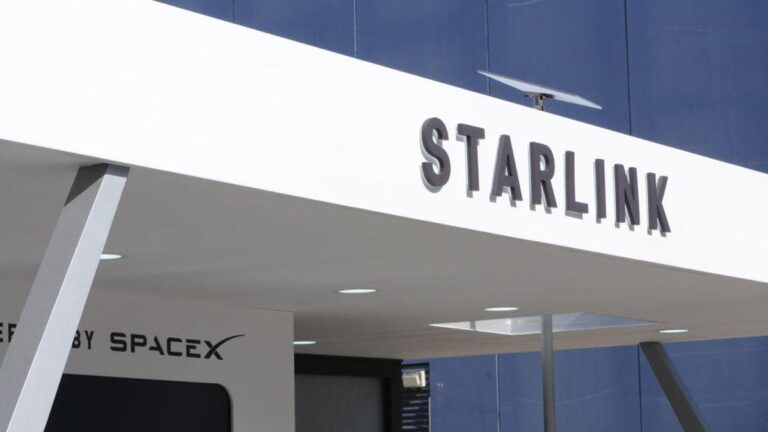In a major win for internet providers like Starlink, the National Telecommunications and Information Administration on Monday released long-awaited guidance on how states can use Broadband Equity, Access and Deployment funds for alternative technologies like low-Earth-orbit satellites. While the news is not set in stone, it could have a major impact in the future for rural residents who don’t have access to high-speed internet.
The $42.5 billion BEAD program is the federal government’s largest-ever investment in broadband, allowing U.S. states and localities to apply for funding to expand the infrastructure needed for high-speed internet. Projects funded by BEAD must meet the FCC’s 100Mbps download/20Mbps upload speed requirements, which were increased in March from a minimum standard of 25/3Mbps.
From the beginning, NTIA has made it clear that expanding fiber optic infrastructure is a priority for states applying for BEAD funds, and that remains the case today, but states can now turn to “alternative technologies” in areas where no cable or fiber optic internet providers operate.
“My gut feeling is that this is a pretty big gift for Starlink,” Christopher Ali, a professor of telecommunications at Pennsylvania State University, told CNET. “But of course, we have to remember that these are really only intended for very high-cost geographies.”
When states receive bids from internet providers for infrastructure expansion, they must first prioritize technologies such as fiber optics, cable, licensed fixed wireless and DSL.
“Fiber optics is a future-proof technology that will scale with residential data demands over time. It is the gold standard,” BEAD program director Evan Fineman said in a blog post announcing the guidance. “But where fiber optics is not economically feasible, states and territories have other options.”
If there are no fiber optic (and cable, DSL, or licensed fixed wireless) providers in an area, or if the deployment costs are too high, states can consider unlicensed fixed wireless and low-earth orbit satellite providers. This does not include satellite providers such as Hughesnet and Viasat, which use satellites farther from the Earth’s surface and do not meet the BEAD speed requirements.
Good news for Starlink, but speeds may be an issue
The NTIA’s announcement is great news for the only current low-Earth-orbit satellite provider in the U.S. (Amazon’s Project Kuiper is reportedly set to launch next year.) Starlink is owned by Elon Musk’s SpaceX, who said at SpaceX in June that BEAD was “a huge waste of taxpayer money and does absolutely nothing to help people in need.”
At the time, the NTIA didn’t believe Starlink would be eligible for BEAD funding, but there were signs that that was changing: SpaceX Chief Operating Officer Gwynne Shotwell said in an August 6 meeting that SpaceX was working with the NTIA to see whether Starlink could bid on the BEAD project and that they would be “very interested in participating.”
According to NTIA guidance, for Starlink to be accepted, it must meet two requirements: there must be no government programs already funding alternative technologies in the area, and there must be no existing providers already offering service that meets BEAD’s speed and latency requirements. In other words, this only applies to very rural and hard-to-reach areas.
If both of these things are true, Starlink can start showing documentation that it can connect all homes in a given area according to BEAD standards.
However, there is no guarantee that Starlink will meet BEAD’s speed requirements of 100Mbps download speeds, 20Mbps upload speeds, and 100ms latency or less. According to the latest Ookla speed test data, the average speeds of Starlink users in the U.S. are 79Mbps download speeds, 10Mbps upload speeds, and 58ms latency, falling below the requirements in all categories.
The NTIA did not immediately respond to CNET’s request for comment on whether Starlink qualifies at its current speeds.
Ali said he was concerned about the cost of providing the service in the future.
“My immediate concern when I read this guidance memo was, ‘Now what?’ We are ready to provide broadband to these extremely high-cost areas, but it’s going to be very hard to scale,” Ali said.
“Yes, we have to have minimum standards, but what happens 10 years from now when more people are getting fiber and the areas where costs are extremely high are still areas where costs are extremely high?”
BEAD funding will help pay for Starlink’s expensive equipment
Another core element of the BEAD program is affordability. NTIA stipulates that internet providers applying for funds must ensure that “high-quality broadband service is affordable to all middle-class households.” This requirement is vague, but according to a Pew Research Center study, it could range from $107.64 in the Northeast to $84.79 in the South.
Starlink’s residential internet plan costs $120 per month, but what will be even more burdensome for many potential users is the $499 equipment fee (on sale for $299 through October 5th). The cost of this equipment “can be significantly more expensive” than other providers, NTIA said in its guidance, and those costs will be subsidized under BEAD to ensure “installation and equipment costs are not a barrier to adoption” for people living in these areas.
“What actually surprised me was that the cost of the equipment is built in,” Ali said. “I was really happy to see that because my research has shown that one of the big barriers for people to get on board with Starlink is the upfront cost.”
Starlink did not respond to CNET’s request for comment, but we will update this story as developments occur.


